NEW READING OF MYSTERIOUS OAK ISLAND INSCRIPTION

Theory points to possible connection with nearby
Birch Island
FOR IMMEDIATE RELEASE
HALIFAX, Nova Scotia: Wednesday, Apr 11th, 2007- - For the past two
centuries, the tunnels of Nova Scotia’s Oak Island have piqued the imagination
of historians and treasure hunters alike. Now, a new theory by First Nations
researcher Keith Ranville may add fresh speculation to the mystery. Based on a
unique reading of an inscription once found in the “Money Pit,” Mr. Ranville
believes that the answer to the riddle may be found on nearby Birch Island.
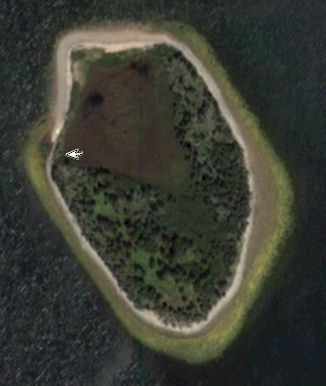
Oak Island, located on the scenic Mahone Bay about an hour’s drive south of the
provincial capital of Halifax, has been associated with buried treasure since
the late 18th century. Local settlers reportedly found a ship’s tackle block
hanging from a tree branch, overhanging a large depression in the ground.
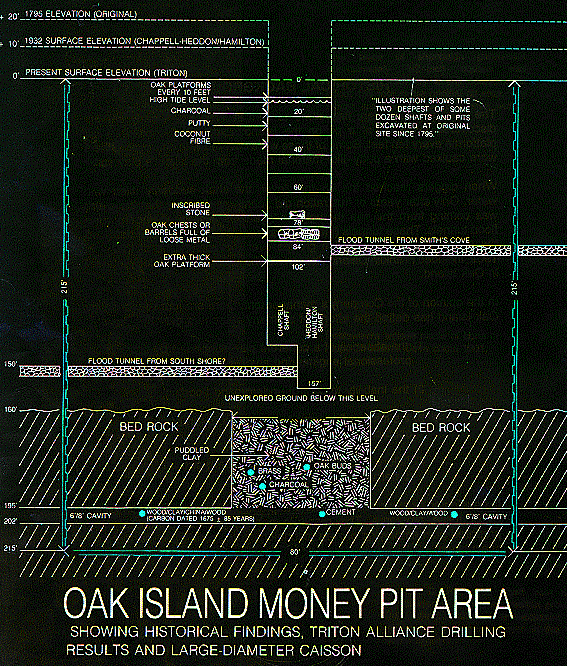
Early efforts to dig down failed when the diggers encountered layers of timber
every 10 feet. In the ensuing generations, several organized excavation attempts
have drilled down nearly 200 feet, en route encountering some artifacts within
the staggered layers of logs, clay, putty, charcoal, flagstones and most
perplexingly, coconut husks. Among the scores of enthusiastic treasure hunters
was a young Franklin Roosevelt, one of the investors in a 1909 excavation
attempt.
During the earlier diggings of 1800’s, the tunnel had become flooded by seawater
– which many believed was the result booby trap being sprung – thus complicating
further digging since then. A drilling effort in the mid 1800’s was said to have
uncovered fragments of a gold chain. In 1971, a camera was lowered into the pit
and reportedly captured images of wooden chests and human remains.
One of the most fascinating artifacts from the pit was said to be a flat stone
recovered at the 90 foot depth, carrying a mysterious inscription. A fragment of
stone with similar symbols was found nearby in Smith’s Cove in the 1930’s. The
stone tablet itself has gone missing, but a record of its symbols remains. Until
now, the consensus is that the symbols are a code translated as “forty feet
below two million pounds are buried.”
Oak Island Money pit inscriptions
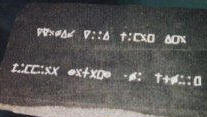
 However,
Keith
Ranville’s theory offers a different interpretation as to the
stone’s symbols, which could lead to a new explanation of the Oak Island
mystery.
“I believe these symbols have been incorrectly assumed to stand for something
else. In the First Nations tradition that I’m a part of, we believe symbols
should simply be looked at in and of themselves, rather than thinking of them as
codes that have to be cracked,” Mr. Ranville explained. “In the pictograms of
Cree Salavics, for example, the images are meant to be descriptive, not
abstract.” Using this approach, Mr. Ranville examined the Oak Island symbols and
found what may be a set of instructions about a tunnel system involving both Oak
Island and nearby Birch Island.
However,
Keith
Ranville’s theory offers a different interpretation as to the
stone’s symbols, which could lead to a new explanation of the Oak Island
mystery.
“I believe these symbols have been incorrectly assumed to stand for something
else. In the First Nations tradition that I’m a part of, we believe symbols
should simply be looked at in and of themselves, rather than thinking of them as
codes that have to be cracked,” Mr. Ranville explained. “In the pictograms of
Cree Salavics, for example, the images are meant to be descriptive, not
abstract.” Using this approach, Mr. Ranville examined the Oak Island symbols and
found what may be a set of instructions about a tunnel system involving both Oak
Island and nearby Birch Island.
Keith's Translations
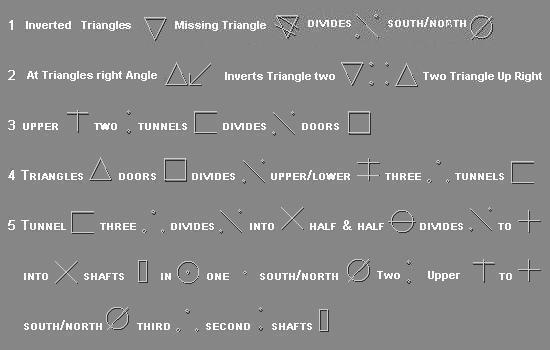
For example, the stone inscription begins with a triangle symbol, which is
repeated throughout. Mr. Ranville believes that this represents nearby Birch
Island, which has a distinctly triangular clearing on its north shore. Likewise,
a symbol showing a circle divided into two hemispheres can be thought of as
representing north/south directional markers. A series of dots in singles, pairs
and triplets may be quantitative symbols.
Examining all the symbols in this way, Mr. Ranville believes that the symbols on
the Money Pit’s stone tablet are actually technical instructions describing the
location and layout of a possible underground network involving both Oak Island
and Birch Island.
Oak Island inscribed artifact with same
inscriptions as the money pit symbol's
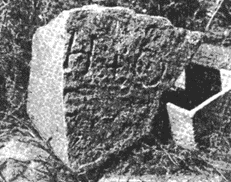
“There was a fragment of another stone tablet that was found on Oak Island’s
Smith Cove in the 1930’s,” Mr. Ranville explained. “It too has these types of
symbols, but one in particular appears to be a Greek symbol designating
‘underwater door’. In conjunction with the other symbols, I believe this points
to underwater doors and additional shafts on Birch Island itself.”
Smiths cove

Smith’s Cove is on the part of Oak Island that is closest to Birch Island, and
is said to have yielded several artifacts itself over the years.
“Based on the inscribed symbols, I think we should be looking at Oak Island and
Birch Island together in order to solve the mystery. If Birch Island proves to
have underwater doors and tunnels around its triangular clearing, then it would
be a huge step forward in our understanding of what Oak Island is all about.”
There have been many, occasionally bizarre, theories as to what the Oak Island
tunnels may contain: a Masonic vault containing the Holy Grail, Viking or Pirate
booty, Inca treasure, the French Royal Crown Jewels, payroll for colonial
British soldiers or even the secret writings of Francis Bacon. Mr. Ranville
prefers not to speculate. “Those are interesting and sometimes funny theories,
but I’d rather just look at the evidence that we do have, and go from there.”
Mr. Ranville is a self-taught researcher born in Manitoba. While living in
Vancouver, he became acquainted with the Oak Island mystery and began studying
it.
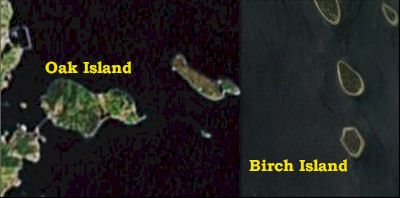
Both Oak Island and Birch Island are private property, and access must be sought
by permission of the landowners.
# # #
Oak Island Leading Research:
Canadian First Nations & Sinclair Heritage
Keith Ranville